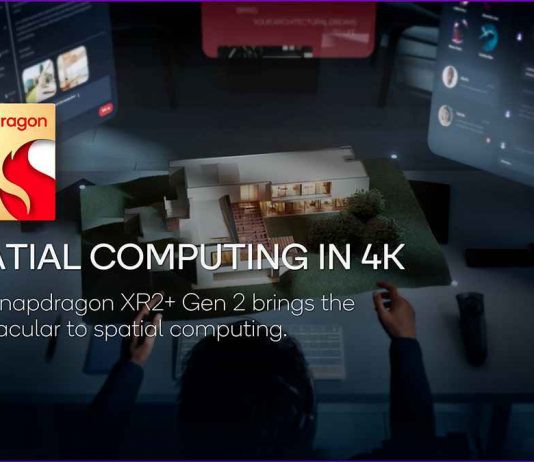Qualcomm has announced its new chipset — the Snapdragon XR2+ Gen 2 — designed to compete directly with Apple’s Vision Pro. This , with tech giants Google and Samsung partnering with Qualcomm to maximize its potential
With tech giants Google and Samsung as key partners, the Snapdragon XR2+ Gen 2 is a significant upgrade over its predecessor, the XR2 Gen 2. It offers enhanced resolution capabilities, supporting up to 4.3K at 90 fps per eye. This marks a substantial improvement from the 3K resolution support of the XR2 Gen 2. Additionally, the new chip can manage 12 or more cameras simultaneously — a notable increase from the 10-camera capability of its predecessor. These advancements are crucial for VR and AR devices, promising a more immersive and comprehensive user experience.
Furthermore, Qualcomm’s new chip isn’t just an upgraded version but a more premium alternative to its three-month-old predecessor, the XR2 Gen 2. It inherits all the advantages of the XR2 Gen 2 architecture, including hardware acceleration for camera passthrough, which significantly reduces latency. However, its enhanced GPU and CPU capabilities, with a 15% higher GPU frequency and a 20% higher CPU frequency, mean that devices using the XR2+ Gen 2 will likely require larger batteries to maintain comparable battery life while utilizing these performance upgrades.
The XR2+ Gen 2’s GPU performance is particularly noteworthy, offering more than double the peak performance of the original XR2’s GPU. This advancement is already being harnessed by some Quest 3 developers to achieve “console-quality” graphics, and with the XR2+ Gen 2’s increased clock speed, developers are expected to push the boundaries even further.
This chipset’s impact extends beyond its technical prowess. Qualcomm, Samsung, and Google are working closely to shape a future where Android maximizes the Snapdragon XR2+ Gen 2’s capabilities, potentially setting new standards for MR experiences. Although it’s yet to be confirmed if these companies are developing MR devices akin to Meta’s Quest offerings, the collaboration signals a strong commitment to advancing the field of MR.
In terms of industry impact, the Snapdragon XR2+ Gen 2 will power a range of upcoming devices. These include Immersed’s Visor, a Google-powered headset from Samsung, a new HTC Vive headset, a YVR headset in China, and a fifth headset from an undisclosed company.


